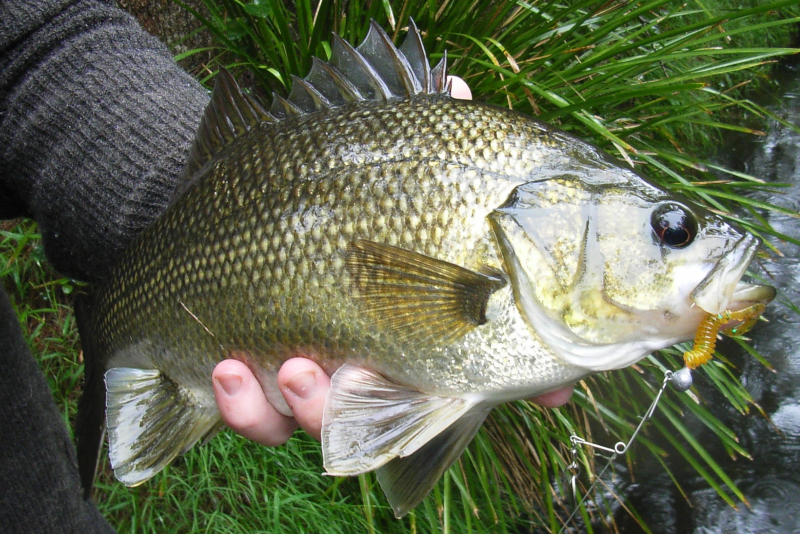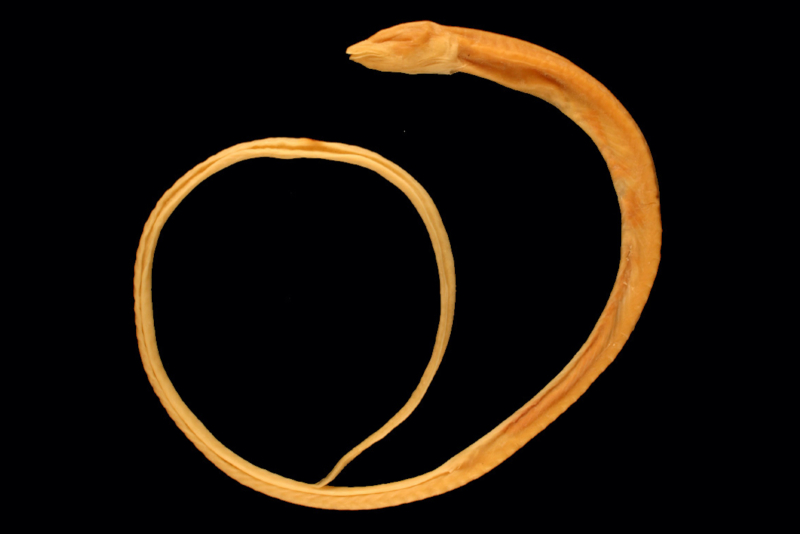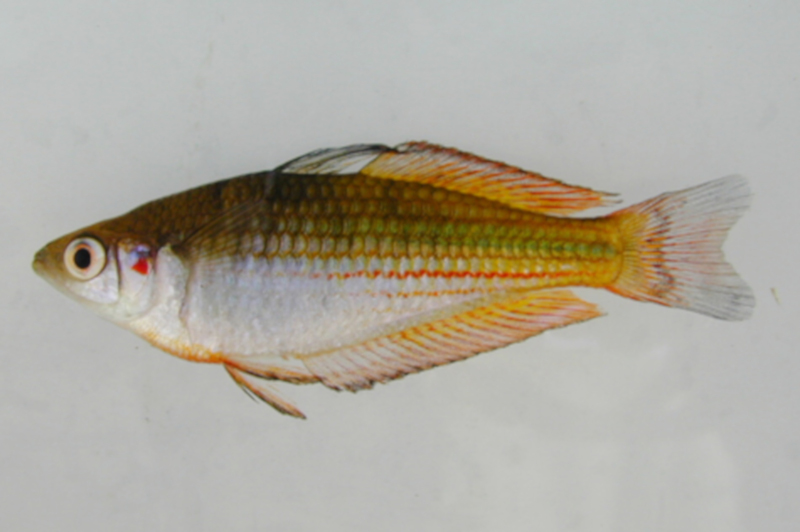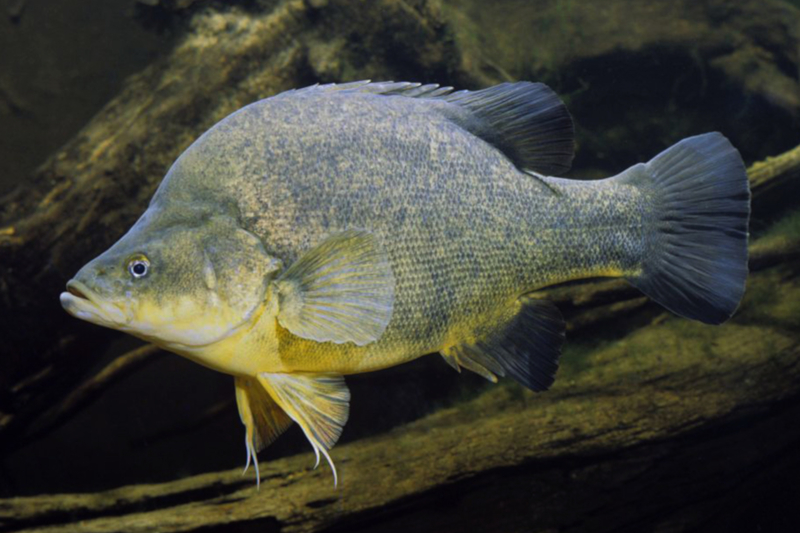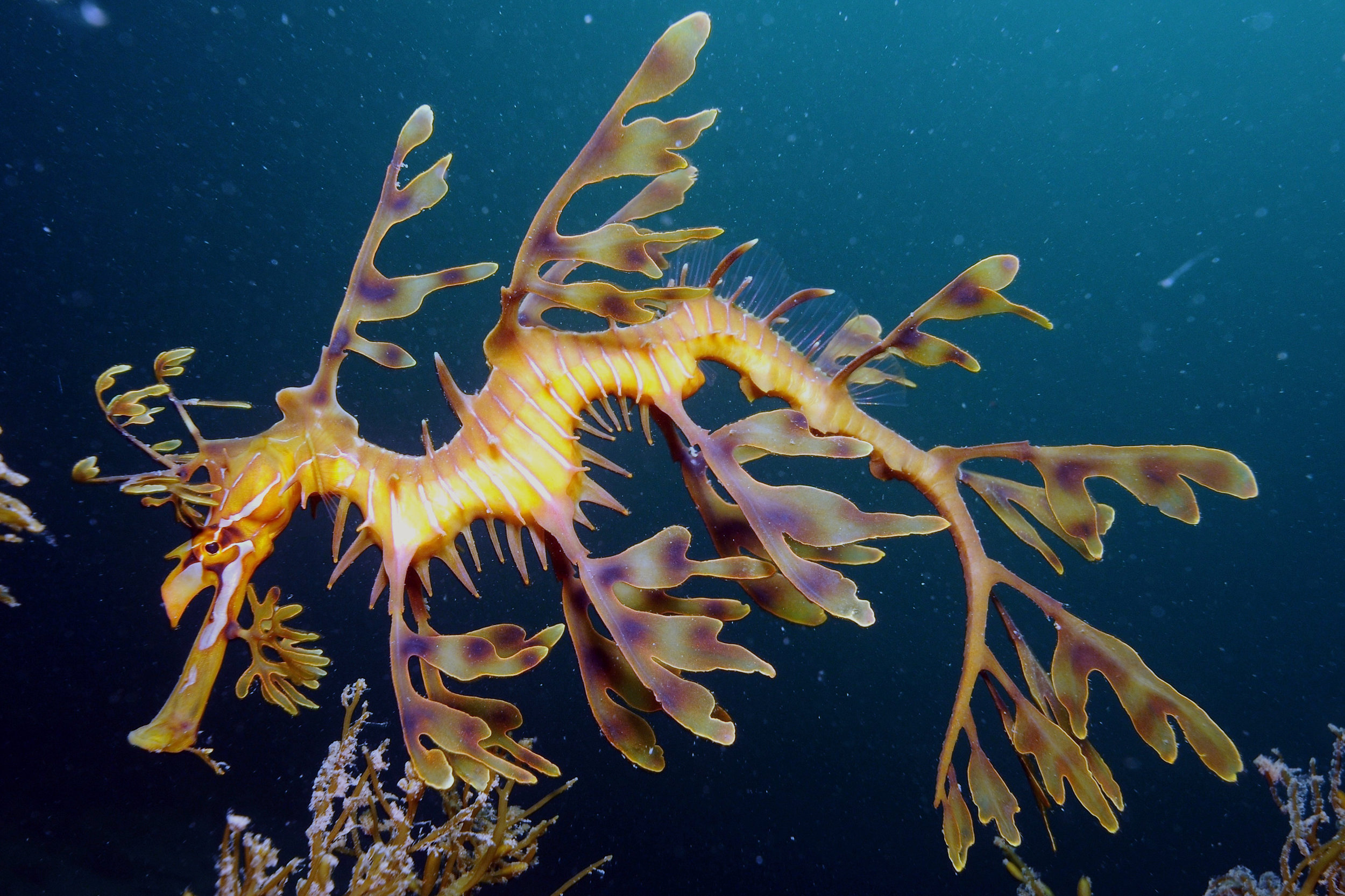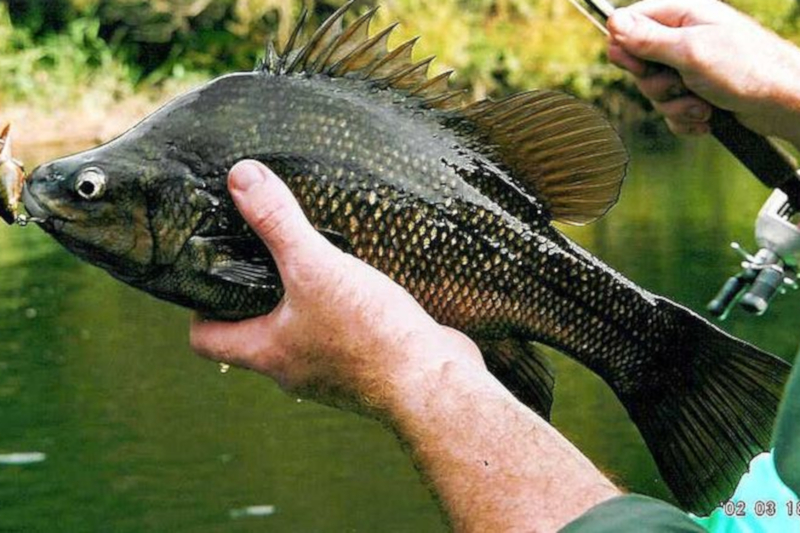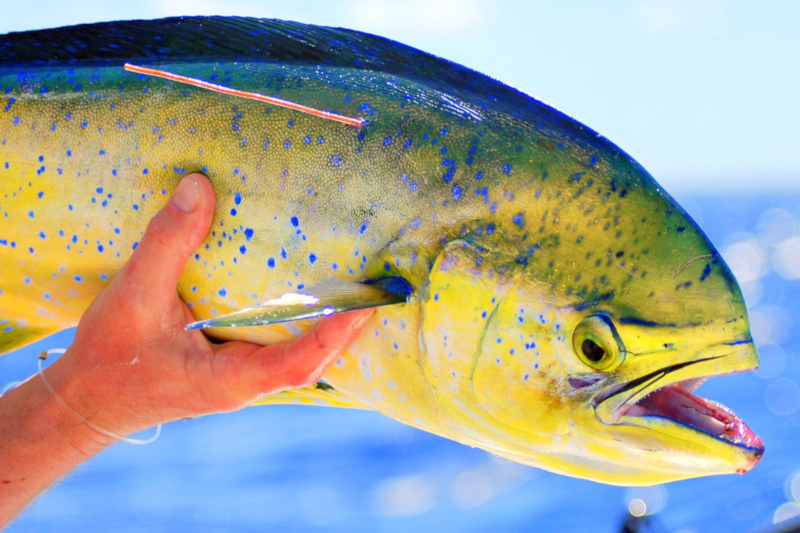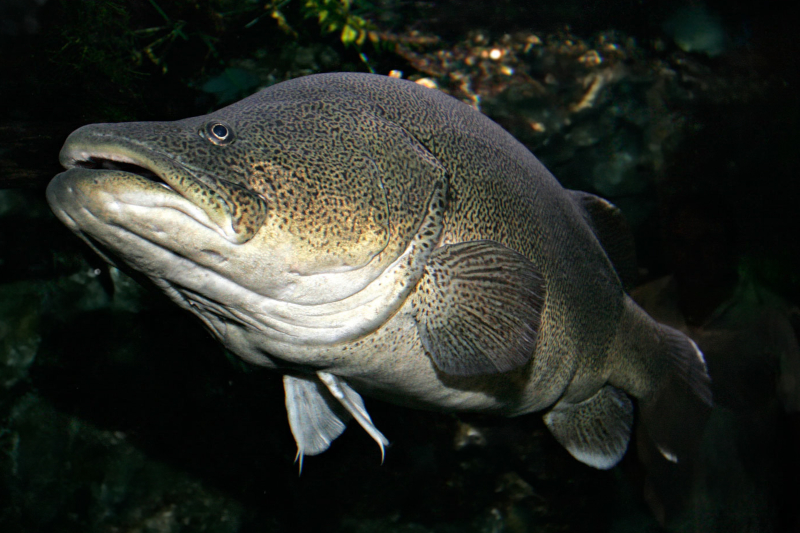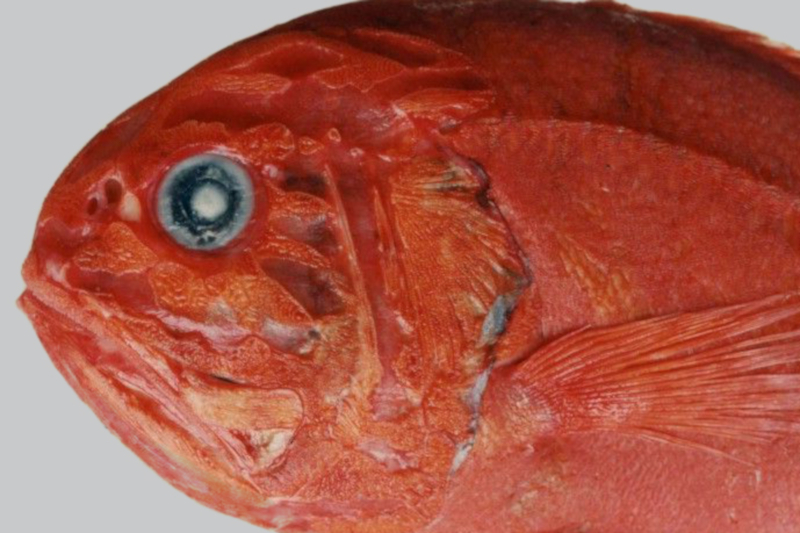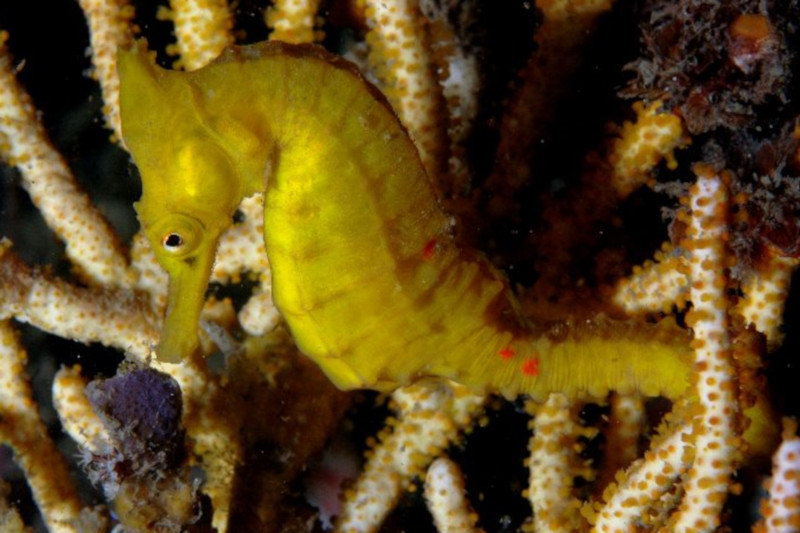Australia’s favourite fish
THE WATERS IN AND AROUND AUSTRALIA PLAY HOST TO MORE THAN 5000 FISH SPECIES, SHOWCASING REMARKABLE AND OFTEN SURPRISING DIVERSITY. WHO WILL BE CROWNED AUSTRALIA’S FAVOURITE?
Illustration by Leigh Douglas
“At night the sea, all around the ship, exhibited a most delightful sight. This appearance was occasioned by the gambols of an incredible number of various kinds of fish, who sported about us, and whose sudden turnings caused an emanation which resembled flashes of lightning darting in quick succession.”
When asked to name an iconic Australian animal, our minds usually tend towards mammals and birds. But our waters also host a veritable wealth of fish diversity: Australia is home to over 5000 species, from the magnificent whale shark at 10m in length to the miniscule red-finned blue-eye, which barely scrapes past 2.5cm.
Australia’s Favourite Fish is a celebration of this incredible diversity. Whether you’re a scientist, an angler, an aquarium hobbyist, or just a general lover of wildlife, there’s plenty to treasure about our native fish.
In this national poll, we hope to crown Australia’s most popular fish. In collaboration with the Australian Society for Fish Biology, we have whittled down Australia’s fish biodiversity to a 51-species shortlist (no easy task) for voting purposes.
Choose your favourite below, and feel free to champion your fish on social media to family and friends. #AusFaveFish
Voting ran from October 8th – October 31, 2018. The results are announced here.
the shortlist
Albacore
~
Thunnus alalunga
Roaming-the-planet/Flickr (CC BY-NC-ND 2.0)
A highly migratory, commercially important tuna species that is heavily fished throughout its range.
Other names: albacore tuna, long-fin tunny, long-finned albacore
Australian bass
~
Macquaria novemaculeata
Codman/Wikimedia Commons (CC BY-SA 3.0)
Living up to 40 years, this migratory river species has in recent decades undergone drastic declines across its eastern Australian range.
Other names: Australian perch, eastern freshwater perch, freshwater perch
Australian lungfish
Neoceratodus forsteri
OpenCage.info (CC BY-NC-SA)
This air-breathing Australian endemic is the most primitive of the six lungfish species that survive in the world today.
Other names: Queensland lungfish, Burnett River salmon
Baldchin groper
~
Choerodon rubescens
Graham Edgar/Reef Life Survey (CC BY)
Endemic to Western Australia and iconic to the Abrohlos Islands, baldchin groper are arguably the state’s tastiest fish, and a favourite amongst recreational fishers and divers.
Other names: baldchin tuskfish, baldchin wrasse, tuskfish
Banded rainbowfish
Melanotaenia trifasciata
opencage/Wikimedia Commons (CC BY 2.5)
The banded rainbowfish is endemic to Queensland and Northern Territory, but has achieved popularity as an aquarium fish thanks to its brilliant and varied colouration.
Other names: bedjal, Goyder River rainbowfish, striped sunfish, three-banded sun-fish
Barramundi
~
Lates calcarifer
Mitch Ames/Wikimedia Commons (CC BY-SA 4.0)
Barramundi are celebrated for their fighting ability on the fishing line. They are also sequential hermaphrodites, with most fish maturing as males and becoming female at 3-5 years old.
Other names: barra, barramunda, cock-up, palmer, Palmer perch, silver barramundi
Barrier reef anenomefish
Amphiprion akindynos
Ian Shaw/iNaturalist.org (CC BY-NC)
Like other members of its genus, the Barrier Reef anenomefish enjoys a mutualistic relationship with sea anenomes.
Other names: brown anemonefish, guarded anemone fish, two-banded anemonefish, two-banded anemone-fish
Black bream
~
Acanthopagrus butcheri
David Muirhead/iNaturalist.org (CC BY-NC)
Black bream are estuary specialists: They can tolerate high levels of salinity, and usually spend their entire life cycle in estuaries and coastal lakes.
Other names: blue nose bream, Gippsland bream, golden bream, Perth bream, silver bream, southern black bream, southern bream, yellow-fin bream
Black cod
~
Epinephelus daemelii
A shy cod species that became a protected species in 1983, after spear and line fishing caused large population declines.
Other names: black rock cod, saddled cod, saddled rock-cod, saddletail cod
Blind cave eel
Ophisternon candidum
Mark Allen/Australian Museum (CC BY)
This enigmatic, faceless fish lives its entire life in complete darkness, in subterranean aquifers on Western Australia's Cape Range Peninsula.
Blue groper
Achoerodus viridis
John Turnbull/Flickr (CC BY-NC-SA 2.0)
New South Wales’ marine emblem is a curious, charismatic wrasse renowned for approaching and interacting with divers as they enter the water.
Other names: blue groper, brown groper, eastern blue wrasse, giant pigfish, red groper
Blue tang
Paracanthurus hepatus
DerHans04/Wikimedia Commons (CC BY-SA 3.0)
A striking coral reef surgeonfish, popular in the aquarium trade, and known to many younger viewers as the forgetful Dory from Finding Nemo and its sequel.
Other names: wedgetail blue tang, blue surgeon, blue surgeonfish, dory, flagtail surgeonfish, flag-tail surgeon-fish, hepatus tang, Indo-Pacific bluetang, palette surgeonfish, palette tang, regal blue surgeonfish, regal blue tang
Common coral trout
Plectropomus leopardus
Jan Messersmith/Flickr (CC BY-NC-ND 2.0)
A large, fish-eating reef predator that has been observed hunting cooperatively with moray eels, Napoleon wrasses and octopuses.
Other names: bluedotted coraltrout, blue-spot trout, coral trout, leopard cod, leopard coral grouper, leopard coral-trout, leopard trout
Crimsonspotted rainbowfish
Melanotaenia duboulayi
Australian Museum/Fishes of Australia (CC BY-NC-SA)
The original “Australian rainbowfish”, popular with aquarium hobbyists since the early 20th century and first exported internationally in 1927.
Other names: Doublay's rainbowfish, Australian rainbowfish
Desert gobY
~
Chlamydogobius eremius
Klaus Stiefel/Flickr (CC BY-NC 2.0)
Colourful males attract females using a distinctive courtship display that involves jerky body movements and raising their dorsal and anal fins.
Other names: Central Australian goby
Dusky flathead
~
Platycephalus fuscus
Richard Ling/Wikimedia Commons (CC BY-SA 2.0)
This oddly-shaped estuarine fish is popular with anglers along Australia’s east coast, but beware those venomous spines.
Other names: black flathead, dusky, estuary flathead, flattie, frog, lizard, mud flathead, river flathead
Eastern blue devil fish
Paraplesiops bleekeri
Taso Viglas/Flickr (CC BY 2.0)
This unmistakable electric-blue reef fish is found in caves and under ledges. It was once a target for the aquarium trade but is now protected across much of its range.
Other names: Bleeker's devilfish, blue-tipped long-fin
Eastern clown anenomefish
Amphiprion percula
Mark Rosenstein/iNaturalist.org (CC BY-NC-SA)
One of the reef’s most recognisable fish, with a suite of fascinating behaviours. When the breeding female in a group dies, the largest male undergoes a rapid sex transformation.
Other names: clown anemonefish, orange anemonefish, orange anemone-fish, orange clownfish
Empire gudgeon
~
Hypseleotris compressa
A popular aquarium fish, males become especially vibrant during the breeding season in order to attract a mate.
Other names: carp gudgeon, empire fish, northern carp-gudgeon
Freshwater moray
Gymnothorax polyuranodon
A shy but stunning moray that occupies tropical Pacific rainforest streams and is the only confirmed freshwater species of the moray family.
Other names: manytoothed moray
Golden perch
~
Macquaria ambigua
A favourite catch amongst anglers in the Murray-Darling River system, and subject to widespread stocking efforts.
Other names: callop, freshwater bream, Murray bream, Murray perch, tarki, white perch, yellowbelly, yellowfin perch
Great white shark
Carcharodon carcharias
Terry Goss/Wikimedia Commons (CC BY-SA 3.0)
A powerful marine predator that feeds largely on seals, penguins, fish and seabirds. Although a highly migratory fish, Australia’s eastern and western populations remain quite distinct.
Other names: great white, white shark, white pointer, white death
Gummy shark
~
Mustelus antarcticus
Frank E. Clarke, 1875/Te Papa, Museum of New Zealand (public domain)
The humble, bottom-dwelling gummy shark provides much of the ‘flake’ served in your local fish-and-chip shop.
Other names: Australian smooth hound, flake, smooth dog-shark, sweet William, white-spotted gummy shark
Hoodwinker sunfish
Mola tecta
This new species, which can weigh several hundred kilograms, was hiding in plain sight for over a century, before it was formally described last year by PhD student Marianne Nyegaard.
King George whiting
Sillaginodes punctatus
South Australia’s most popular recreational fish, and great eating by most accounts.
Other names: Australian whiting, black whiting, pussies, South Australian whiting, spotted sillago
Largetooth sawfish
Pristis pristis
Simon Fraser University/Flickr (CC BY 2.0)
Northern Australia is one of the few remaining strongholds for the largetooth sawfish, which is rapidly disappearing across its global range and is considered critically endangered.
Other names: freshwater sawfish, common dawfish, Leichhardt's sawfish, smalltooth sawfish, wide sawfish
Leafy seadragon
~
Phycodurus eques
James Rosindell/Wikimedia Commons (CC BY-SA 4.0)
Elaborate leaf-like protrusions help this fish camouflage itself amongst the kelp and seagrass. The leafy seadragon has been South Australia’s marine emblem since 2001.
Other names: Glauert's sea-dragon, leafy sea-dragon
Macquarie perch
Macquaria australasica
Codman/Wikimedia Commons (CC BY-SA 3.0)
A combination of factors — among them overfishing, habitat destruction, infectious disease and introduced species — caused massive declines in Macquarie perch from the 1980s.
Other names: black bream, black perch, bream, Gouldburn bream, macca, mountain perch, Murray bream, Murray perch, silvereye, white-eye
Mahi mahi
Coryphaena hippurus
J Thomas Murray/iNaturalist (CC BY-NC)
The mahi mahi can reach 1-2 metres in length, has brilliant colouration, and is considered excellent eating. A prized gamefish.
Other names: common dolphinfish, dolphin, dolphin fish, dorado, mahimahi, mahi-mahi
Manta ray
Mobula alfredi
Shiyam ElkCloner/Wikimedia Commons (CC BY-SA 3.0)
Although the smaller of the two manta ray species, this fish is no slouch in the size department — boasting a disc width of up to 5 metres.
Other names: Alfred manta, Australian devil ray, coastal manta ray, devilfish, inshore manta ray, munguna, Prince Alfred's ray, reef manta ray, resident manta ray
Murray cod
~
Maccullochella peelii
Fir0002/Wikimedia Commons (CC BY-NC 2.0)
Australia’s largest freshwater bony fish. Once widespread through the Murray-Darling River system, the Murray cod is now rare in many places and large individuals are seldom caught.
Other names: cod, codfish, east coast cod, goodo, goodoo, green fish, Mary River cod, Murray perch, ponde, pondi, Queensland freshwater cod
Northern river shark
Glyphis garricki
White et al./Wikimedia Commons (CC BY 4.0)
The northern river shark is exceedingly rare, and we know next to nothing about it. It has been sporadically recorded in northern Australia and Papua New Guinea.
Other names: New Guinea river shark
Orange roughy
~
Hoplostethus atlanticus
Daphne Themelis/Fisheries and Oceans Canada/ WORMS (CC BY-NC-SA)
This distinctive deep-sea fish has been historically overfished due to its slow life history and low fecundity, with major harvest restrictions now in place in Australia.
Other names: deepsea perch, orange ruff, red roughy, sea perch
Port Jackson shark
Heterodontus portusjacksoni
These small, friendly sharks have been described as the “puppy dogs of the ocean”. Some individuals undertake annual migrations of up to 600km along Australia’s eastern coast.
Other names: bullhead, dogshark, horn shark, oyster crusher, pigfish, tabbigaw
Purple spotted gudgeon
Mogurnda adspersa
Haplochromis/Wikimedia Commons (CC BY-SA 3.0)
Although still common in central Queensland, this species is threatened in other parts of its range. The South Australian population was almost extinct prior to a successful captive breeding program.
Other names: purple-spotted gudgeon, southern purple-spotted gudgeon, trout gudgeon
Queensland groper
Epinephelus lanceolatus
Thomas Hawk/Flickr (CC BY-NC 2.0)
One of Australia’s largest fish, the Queensland groper can grow up to 2.7 m and over 400kg. Juveniles have beautiful black and yellow colouration and are found on inshore reefs.
Other names: giant grouper, groper, grouper, Queensland grouper
Red-finned blue eye
Scaturiginichthys vermeilipinnis
Australia’s smallest freshwater fish is critically endangered and found only in Central Queensland in a few artesian springs on Edgbaston Reserve.
Other names: Redfin blue-eye
Running River rainbowfish
Melanotaenia sp.
This undescribed rainbowfish, confined to a 7km stretch of river near Townsville, Queensland, was recently rescued from extinction by an eleventh hour captive breeding program.
Other names: Burdekin rainbowfish, Hidden Valley rainbowfish, zig zag rainbowfish
SNAPPER
~
Chrysophrys auratus
Fir0002, Flagstaffotos/Wikimedia Commons (CC BY-NC 3.0)
One of Australia’s most popular recreationally-caught fish. If they avoid the hooks, snapper can live up to 40 years in the wild.
Other names: Australasian snapper, cockney, cockney bream, eastern snapper, nobblers, pink snapper, pinkie, queen, red bream, silver seabream, squire, tamure, western snapper, white snapper
Sooty grunter
~
Hephaestus fuliginosus
Tony Rodd/Flickr (CC BY-NC-ND 2.0)
The sooty grunter can be found in fast-flowing freshwater streams in northern Queensland and the Northern Territory.
Other names: black bream, blubberlips, northern grunter, purple grunter
Southern bluefin tuna
Thunnus maccoyii
These large, commercially-prized fish are also physiologically fascinating — unlike most fish, they can maintain their body temperature well above that of the surrounding water.
Other names: bluefin, Japanese Central Pacific bluefin tuna, southern tuna, southern tunny
Southern shortfin eel
Anguilla australis
Lek Khauv/iNaturalist.org (CC BY-NC)
The southern shortfin eel was subject to the world’s earliest known aquacultural operation, 7000 years ago at the Budj Bim eel traps in southwest Victoria.
Other names: Australian shortfinned eel, freshwater eel, river eel, silver eel, yellow eel
Spotted handfish
~
Brachionichthys hirsutus
The spotted handfish, confined to a few small sites in Tasmania’s Derwent River Estuary, is one of the world’s rarest marine species. A captive breeding program is helping to secure its long-term survival.
Other names: prickly-skinned handfish, red handfish, tortoiseshell fish
Tasselled wobbegong
Eucrossorhinus dasypogon
Jon Hanson/Flickr (CC BY-SA 2.0)
One of 10 wobbegong species found in Australian waters. These carpet sharks are known for their excellent camouflage and shaggy, beard-like growths around the mouth.
Other names: bearded wobbegong, Ogilby's wobbegong
Tiger shark
Galeocerdo cuvier
Albert kok/Wikimedia Commons (CC BY-SA 3.0)
Tiger sharks are solitary, nocturnal hunters, capturing their prey with brutal efficiency. They have a reputation for eating almost anything that gets within biting distance.
Trout galaxias
Galaxias truttaceus
This galaxias is endemic to southern parts of the continent, including Victoria, Tasmania and South Australia, with a genetically distinct (and endangered) population in Western Australia.
Other names: minnow, mountain trout, native trout, ocellated mountain trout, spotted galaxias, spotted minnow, spotted mountain trout, spotted trout, spotted trout minnow, trout minnow, western mountain trout, Yarra trout
Weedy seadragon
Phyllopteryx taeniolatus
Klaus Stiefel/Flickr (CC BY-NC 2.0)
Victoria’s marine emblem is a carnivore, sucking up small crustaceans and other invertebrates through its tubular snout.
Other names: common seadragon
Whale shark
~
Rhincodon typus
Abe Khao Lak/Wikimedia Commons (CC BY-SA 4.0)
The ocean's largest fish is a slow-moving filter-feeder, providing divers at Ningaloo Reef, Western Australia, with some of their most memorable close encounters.
White’s seahorse
~
Hippocampus whitei
Recent population declines in Port Stephens, New South Wales, have been partly addressed by installing simple ‘seahorse hotels’ to replace lost habitat.
Other names: common seahorse, New Holland seahorse, Sydney seahorse
Yellowtail kingfish
Seriola lalandi
Brian Gratwicke/Flickr (CC BY 2.0)
The yellowtail kingfish supports important commercial and recreational fisheries in Australia, and has also been successfully aquacultured.
Other names: albacore, amberjack, bandit, Californian yellowtail, hoodlum, kahu, king amberjack, kingfish, kingie, silver king, southern yellowtail, Tasmanian yellowtail, yellowtail amberjack
The Australia’s Favourite Fish poll is supported by the Australian Society for Fish Biology. Species descriptions were contributed by Andrew Katsis, Lachlan Fetterplace, David Harasti, Katherine Cure, Brendan Ebner and David Boseto. We are also indebted to Museum Victoria’s Fishes of Australia database, curated by Dianne Bray, for additional species information and alternative names.



